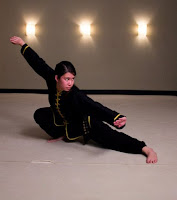Leadership is a vital element in any successful organization. To cultivate a culture of strong leadership, employers must focus on developing environment and strategies that not only inspire their current leaders, but also reach out to potential leaders in the workforce.
Leadership development is not a one-time event; it takes a long-term, consistent commitment and permanent improvements to ensure that leadership skills are effectively nurtured and developed. Here are some important strategies for cultivating a culture of leadership:
1. Establish Clear Goals & Expectations: A key factor in cultivating a culture of leadership is to provide clear goals and expectations that the organization is following. Leaders need to know what results are expected and what support is provided to achieve them. Doing so provides a sense of direction and purpose, inspiring potential leaders to strive for excellence.
2. Invest in Training Programs: Investing in training and development programs for potential, new or current leaders is essential for cultivating a culture of leadership. These programs can provide employees with the knowledge and skills necessary to effectively lead teams and manage projects. By investing in such programs, employers also demonstrate their commitment to the growth and development of their leadership skills.
3. Recognize & Reward Leadership: Acknowledge and reward strong leadership. Publicly recognize and reward leaders who exemplify leadership qualities, such as taking initiative, problem-solving, and encouraging collaboration. This sends a strong message that leadership is valued and appreciated within the organization.
4. Foster Communication & Collaboration: Foster communication and collaboration between leaders and employees by encouraging team building activities, such as group lunches, retreats, and outings. This helps to create a positive workplace culture and enhances collaboration among members of the leadership team.
5. Encourage Learning: Lastly, create an environment that encourages learning. This can be done by providing learning opportunities and resources such as seminars and workshops specifically focused on leadership development. Additionally, employers should provide flexible work schedules to allow for personal development activities like taking classes or reading books on leadership.
By applying the strategies outlined above, employers can create a culture of strong leadership within their organization. This will not only help to foster and nurture current leaders, but also reach out to potential leaders in the workforce. Investing in leadership development programs, recognizing and rewarding successful leaders, fostering communication and collaboration among team members, and encouraging learning activities are all essential elements in cultivating a culture of leadership.
By taking the time to implement these strategies and truly commit to cultivating a culture of strong leadership, employers can create an environment that supports and rewards success. Doing so can result in a more productive, collaborative, and successful organization.

































